Previous posts in the New Narrows Bridge Series:
Quite a bit of work has transpired since my tour of the construction site. The bird cages — enclosed structures used for work on the towers themselves — have been removed (see above), the top struts completed, and the saddles for the forthcoming suspension cables have been placed at the tops of both the east and west towers. The concrete pours are complete, and the concrete plant has been disassembled. It’s time to start spinning the cables from shore to shore.
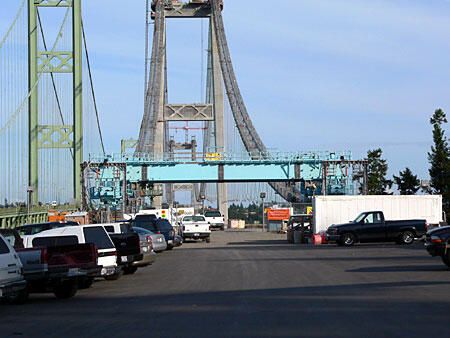
So, how will they string the suspension cables from both anchorages on shore and across the tops of the towers?
The answer starts with the cable catwalks.
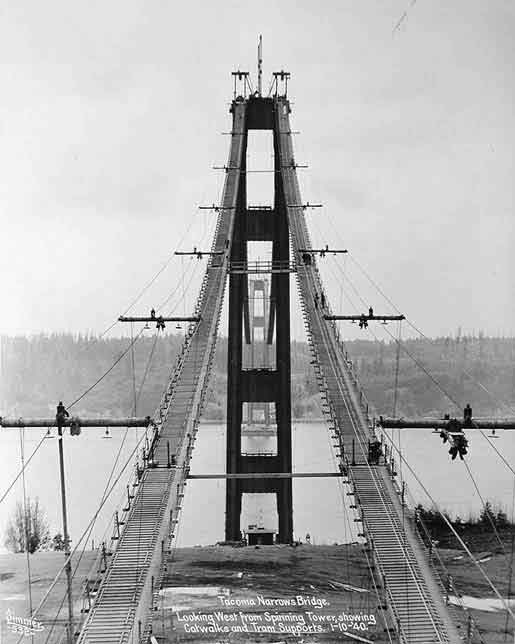
This technique has been around for many years; the above photo shows the catwalks on the first Narrows Bridge (“Galloping Gerty”, the one which collapsed in 1940), and the photo below shows them on the Golden Gate bridge — built 5 years earlier, designed by the same engineer — Leon Moisseiff.
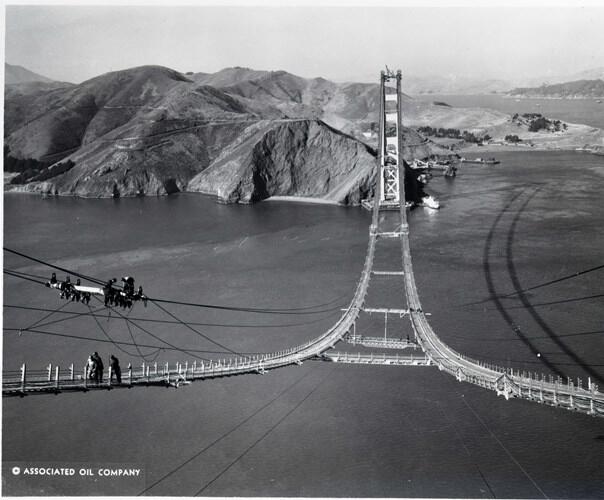
As the Chinese might say, a cable of a thousand strands starts with a single line. Starting at the saddles and their overhead gantries on each shore, a single stranded steel cable, 5/8 inch in diameter, is attached. The anchor saddle and gantry is seen here:

On the west anchor, where there is unrestricted access to the shoreline of the Narrows, the line was dragged to the beach, where it was secured to a small skiff. At the tower, a second line was dropped from a winch, and secured to a tugboat. The two boats met, and the lines were attached by a steel connector plate. The winch then pulled the connected line upward until the proper tension was achieved.
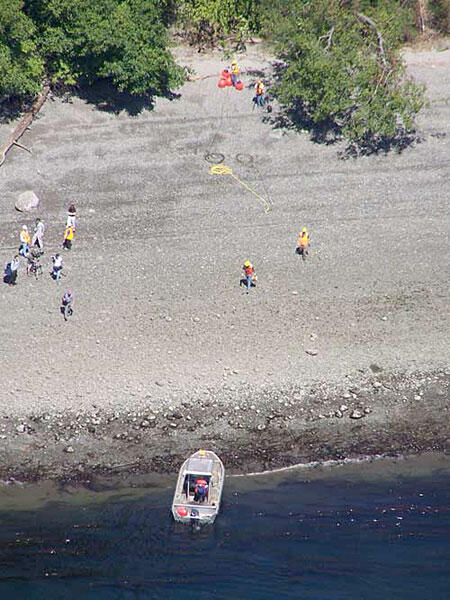
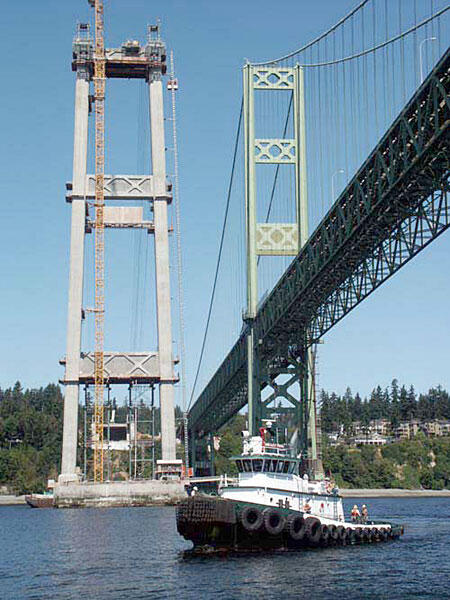
A total of twelve lines were pulled in this manner for each catwalk: eight for the deck, and four for the railings.
On the east bank things were a bit trickier. Because of a railroad line running along shore, the lines could not be pulled directly to the beach, but had to be brought out on the walkway under the existing bridge.
Once the lines between anchors and towers were in place, additional lines were dropped from the towers, carried by tugs to the opposite tower, and lifted up to connect the longer span between the east and west towers. A delicate lacework of steel cables now spanned the Narrows from shore to shore.
Once the support wires for the catwalks were in place, the process of laying the catwalks themselves was started.

The walkway is heavy steel grating, roughly akin to chain link fencing, and is attached in rolls at the tower and rolled out on the cables in sections. Perpendicular wooden slats are wired to the mesh for traction, one to two feet apart. Nylon mesh fencing and flourescent lighting fixtures — to allow work at night — complete the catwalk. Four-foot wide crosswalks are placed periodically to stabilize the catwalks in the wind and allow workers to crossover.

The catwalks will serve as a temporary structure to allow overhead spoolers to lay 19,000 miles — yes, that’s miles–of steel cable which will be bundled to form the actual suspension cables for the decking.
The catwalks are similar in design in many ways to those used on the first Narrows Bridge in 1940. At that time, folks were a bit more relaxed — and the attorney-to-other-human-being ratio was quite a bit lower than it is today. So well-connected folks could go for a little stroll over the water. The wife of the state bridge inspector — Mrs. Harvey Donnelly — took the tour with the most panache, however: she sashayed from shore to shore on the catwalks in her high heels.
Sweet.

And her class act will never be outdone: only a few dozen specially trained workers will be allowed on the catwalks this time around. Do they make work boots with high heels?
More to come, on spinning the cables.